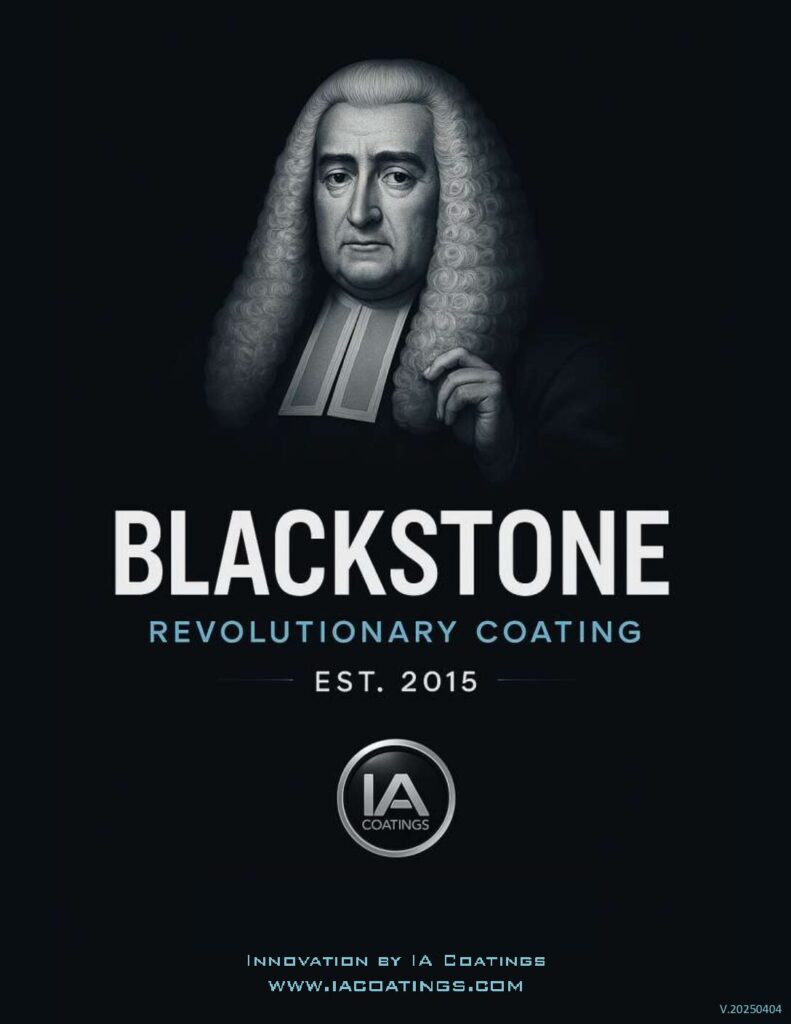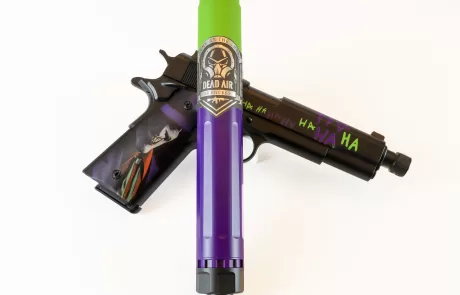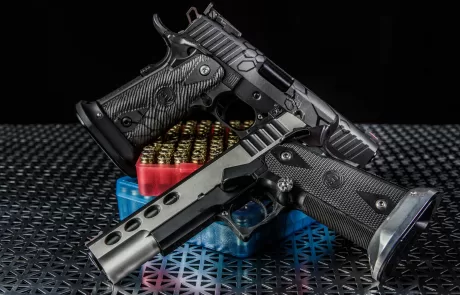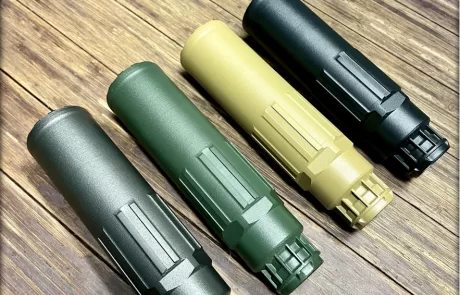Blackstone Coating
Blackstone – The Future of Performance Coatings
Since 2015, Blackstone by IA Coatings has set the benchmark for performance coatings, trusted by OEMs, law enforcement, and military clients for their most demanding applications. Now fortified with Graphene, Blackstone delivers breakthrough durability, friction reduction, and corrosion protection — designed to perform under pressure, in any environment.
The Blackstone Lineup
Each Blackstone formulation is precision-engineered for specific challenges:
- Blackstone DFL — PTFE-based dry film lubricant for ultra-low friction and corrosion resistance.
- Blackstone Plus — Enhanced abrasion resistance for moving parts and high-contact components.
- Blackstone HD — Heavy-duty protection for fasteners, industrial hardware, and rugged environments.
- Blackstone TC — High-temperature ceramic coating with superior heat dissipation and impact resistance.
All Blackstone coatings are tested to MIL-STD-810G and ASTM B117 standards for corrosion, wear, and salt spray protection.
What Makes Graphene Revolutionary?
Graphene is the strongest, thinnest, and most conductive material ever discovered. When integrated into the Blackstone family, it delivers:
- Unmatched Corrosion Resistance
- Extreme Heat Resistance
- Superior Durability & Strength
- Ultra-Low Friction
- High Flexibility & Chemical Resistance
This allows Blackstone coatings to outperform traditional ceramic, PTFE, and powder coatings across a variety of industries and applications.
Blackstone vs. Cerakote and Anodizing
Compared to Cerakote and anodizing, Blackstone:
- Offers greater color consistency without pigment additives
- Maintains material integrity (no fatigue loss or oxide brittleness)
- Is VOC compliant and free from heavy metals like hexavalent chromium
- Provides longer-lasting protection with a thinner, more precise film
Available in Black, Greystone, Sandstone, and Greenstone, Blackstone coatings give designers and engineers a sleek, high-performance finish without compromising tolerances.
Applications & Industries Served
Why Choose Blackstone
MIL-STD and ASTM Compliance
Blackstone Plus Blackstone HD and Blackstone TC are MIL-SPEC and all Blackstone’s are ASTM Compliant!
MIL-L-46010E:
U.S. military specification that defines the performance requirements for solid film lubricants used on metal surfaces to reduce friction, prevent corrosion, and withstand extreme environmental conditions. Coatings meeting MIL-L-46010E must demonstrate excellent adhesion, wear resistance, thermal stability, and low coefficient of friction under rigorous testing standards.
MIL-STD-810G Method 509.5:
The salt fog method is performed to determine the effectiveness of protective coatings and finishes on materials. It may also be applied to determine the effects of salt deposits on the physical and electrical aspects of the material.
Choose Blackstone when failure is not an option
The Blackstone Lineup
Blackstone DFL
with GrapheneBlackstone DFL
Modified for internal components to reduce friction and heat. Blackstone DFL is fortified with Graphene and Teflon® to lower Coefficient of Friction for a super-lubricity effect. Great for high friction components.
ASTM Tested
D1400-87, D3359, D4145, D4060-95, D3363, B117-73, 523Blackstone DFL
Tested for dry film thickness, adhesion, impact, abrasion, pencil hardness, chemical / corrosion resistance, & gloss.
Blackstone Plus
with GrapheneBlackstone Plus
Extreme heat management is controlled with Blackstone High-Temp. Improving conductivity through Graphene, this formula will reduce temperatures for a myriad of applications.
MIL-STD-810G
Military Specification for Salt CorrosionBlackstone Plus
Blackstone Plus was exposed to 72 hour MIL-STD-810G Method 509.5 test, with no traces of corrosion or rust penetration.
ASTM Tested
D1400-87, D3359, D4145, D4060-95, B117-73, 523Blackstone Plus
Tested for dry film thickness, adhesion, impact, abrasion, pencil hardness, chemical resistance, corrosion, & gloss.
Blackstone HD
with GrapheneBlackstone HD
Engineered and specifically designed for components to reduce scratches and wear, and to resist chemical and environmental exposure. Perfect when durability is required.
MIL-STD-810G
Military Specification for Salt CorrosionBlackstone HD
Blackstone HD was exposed to 72 hour MIL-STD-810G Method 509.5 test, with no traces of corrosion or rust penetration.
ASTM Tested
D1400-87, D3363, B117-73Blackstone HD
Blackstone Heavy Duty is tested for dry film thickness, pencil hardness, chemical resistance, and salt corrosion.
Blackstone TC
with GrapheneBlackstone TC
A high-temperature ceramic coating fortified with Graphene & engineered for exceptional heat dissipation, thermal barrier protection, & impact resistance in extreme environments.
MIL-L-46010E
Military Specification for Lubricating CoatingsBlackstone TC
Blackstone TC meets MIL-L-46010E a requirement for extreme wear resistance, corrosion protection, & low friction.
ASTM Tested
D3363, D3359, D522, D2794, D1400-87Blackstone TC
Tested for pencil hardness, scratch hardness, adhesion, mandrel bend, and impact resistance, and dry film thickness.





